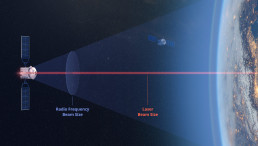No More Red Tape
If you want to establish your own satellite internet you just have to build your satellite, launch it, see it start circling the Earth, and then you can start beaming internet down to hard-to-reach places. This is how it works, right? The rest is a doddle. Wrong. Before you even start thinking about launching your satellite you need to apply for a license from every country you want to send an RF beam down to. You have to pay the costs associated with each licensing regime. Then you have to wait. And wait. And then, in about a year, you might – just – be ready to launch your satellite and start your broadband service.
Laser communication is not regulated by the International Telecommunication Union and it can be used without restrictions and does not require costly licenses. The reason for this is that its inherent small beam size avoids interference issues and renders any restrictive regulation in the future highly unlikely.
The Variation in Regulation
There is not just a long wait for the licenses necessary for operating RF equipment exemplary in the Ka- or X-band; the licenses will also only allot you a fraction of the spectrum that is available and will only be approved after a costly application process.
| Typ. Scenario | Typical available bandwidth | Time to approval | Free/Regulated |
| Satellite downlink X-band | 1 GHz | >12 Months | Regulated |
| Satellite downlink Ka-band | 2 GHz | >12 Months | Regulated |
| Satellite downlink Laser | 12,000 GHz | Immediately | Free |
